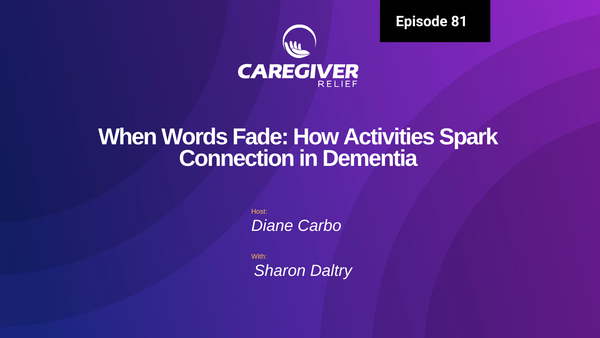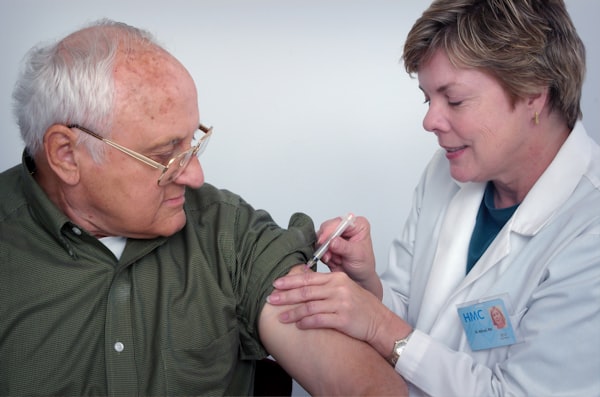What are the 5 Types of Hallucinations?
Hallucinations occur when a person perceives something that isn’t actually there. This could be anything from hearing voices to feeling physical sensations. It is important to understand the different types of hallucinations and the causes

Understanding Hallucinations and the 5 Types
Hallucinations occur when a person perceives something that isn’t actually there. This could be anything from hearing voices to feeling physical sensations. In the context of dementia and other brain disorders, individuals may experience auditory and visual hallucinations, which can evoke feelings of paranoia and panic. Medication can play a role in alleviating these symptoms. It is important to understand the different types of hallucinations and the causes in order to make sure that you, or someone you care about, get the right help and support.
In this guide, we will be exploring the different types of hallucinations, as well as common causes and treatment options.
Hallucinations Overview
Hallucinations are sensory experiences that people perceive as real even though they are not. They can occur in any of the five senses and can be quite frightening. People often experience auditory, visual, olfactory, gustatory, or tactile hallucinations.
It is estimated that approximately 3.6% of the adult population has experienced at least one hallucination in their lifetime. However, this may be an underestimate due to the fact that hallucinations can be embarrassing, and many people don’t report them.
Hallucinations can be caused by various physical and mental health conditions. These include conditions like schizophrenia, bipolar disorder, temporal lobe epilepsy, dementia, and delirium. Substance use, including drugs, alcohol, and medication, can also cause hallucinations. Stress, anxiety, and sleep deprivation can also trigger hallucinations. Understanding when and why hallucinations happen, particularly in relation to sleep disorders, can make the experience less frightening and highlights the importance of medical evaluation to address any underlying health issues.
Some people may have underlying genetic or biological factors that increase their risk of having hallucinations. It is important for anyone experiencing hallucinations to speak to a medical professional for a proper diagnosis and to determine the best course of treatment.
Definition of Hallucination
A hallucination is an experience of perceiving something that is not actually there. Hallucinations differ from illusions in that illusions occur when a real stimulus is misinterpreted or misperceived, whereas hallucinations are perceived without any real external stimulus.
Hallucinations can be experienced in any of the five senses - auditory, visual, olfactory, gustatory, and tactile. Auditory hallucinations are the most common, often involving hearing voices. Visual hallucinations can range from seeing flashes of light or colors to seeing fully formed people or objects. Olfactory hallucinations involve smelling odors that aren't actually there, such as smoke or flowers. Gustatory hallucinations involve tasting things that aren't there, such as metal or sour fruits. Finally, tactile hallucinations involve feeling sensations that don't exist, such as a crawling sensation on the skin.
Hallucinations can occur in both healthy people and those with mental health issues, although they are more common in certain conditions such as schizophrenia or bipolar disorder. Experiencing hallucinations can be a sign of an underlying psychological condition, and it's important that anyone who experiences them should seek professional help.
Hallucinations can be confusing and scary, but understanding the different types and causes can help people better understand what they are experiencing.
Types of Hallucinations
Hallucinations are sensory experiences that appear real, but they are not. They can be seen, heard, felt or smelled, even though no external stimuli is present. The 5 main types of hallucinations are auditory, visual, olfactory, gustatory, and tactile.
Auditory hallucinations involve hearing noises, voices, or other sound-like sensations that are not actually present. Visual hallucinations are a type of hallucination that involves seeing things that are not there, such as animals, people, or objects. Olfactory hallucinations involve smelling scents or odors that others do not smell. Gustatory hallucinations involve tastes in the mouth that have no physical source such as a food or drink. Finally, tactile hallucinations involve physical sensations on the skin or other parts of the body, such as feeling something crawling on the skin, or feeling a presence. Complex hallucinations, in contrast to simpler forms, can manifest as vivid and realistic images of people, faces, or animals.
Hallucinations can be very distressing and frightening to experience. Although it is rare for hallucinations to be a sign of a serious mental illness, some medical conditions, drugs, and other factors can trigger them and they should be taken seriously.
Auditory Hallucinations
Auditory hallucinations, also known as ‘hearing voices’, are the most common type of hallucination. These are perceived noises that come without any external sound source. People experiencing auditory hallucinations may hear voices, which can involve the perception of sounds or voices that are not present, often associated with mental health conditions such as schizophrenia. This phenomenon can lead to significant distress or confusion for those affected.
Some examples of the types of things people may hear include:
- Instructions from external forces
- Voices coming out of objects such as a TV or radio
- People talking about them in a derogatory way
- Whispers or threats
- Music
- Angry voices
Auditory hallucinations can vary in intensity, ranging from quiet background noise to loud and persistent voices that can be intrusive and distressing. They can be experienced in a variety of ways, such as hearing it through one ear or both, or hearing it inside or outside their head.
Visual Hallucinations
Visual hallucinations are one of the most common types of hallucination. They involve seeing things that are not actually there. These things may appear as fully formed objects or creatures, flashing lights, or a distorted view of the surrounding environment. People with visual hallucinations often describe feeling like they are looking through a foggy window or having trouble focusing due to a blurry vision. Visual hallucinations can occur whether a person’s eyes are open or closed.
Simple visual hallucinations, a type of sensory experience, often manifest as basic shapes or flashes of light, contrasting with more complex hallucinations.
Visual hallucinations occur when a person’s brain is unable to correctly process visual information. This could be due to a variety of factors such as mental health issues, substance abuse, physical illness, and neurological disorders. Visual hallucinations can also be caused by sleep deprivation, extreme stress, or sensory deprivation.
It’s important to note that the visuals themselves are not necessarily bad or dangerous. It’s more important to focus on the underlying cause of the hallucination so that the person can be treated accordingly. Visual hallucinations can be extremely disorienting and frightening, which can cause distress and anxiety. Consulting a medical professional for a diagnosis and treatment options is essential for managing hallucinations.
Olfactory Hallucinations
Olfactory hallucinations, also known as phantosmia, is the perception of a smell that isn't actually present. This type of hallucination is much less common than auditory or visual hallucinations, although some people can experience it. People who have experienced olfactory hallucinations report a variety of smells, which can sometimes overlap with tastes.
Most individuals who suffer from this type of hallucination describe an unpleasant smell, such as the smell of smoke, decaying flesh, or vomit. While olfactory hallucinations are often associated with mental health issues, they can also be caused by other conditions such as a sinus infection or head trauma.
Unlike visual or auditory hallucinations, olfactory hallucinations cannot be completely blocked out. The only thing that can be done to reduce the intensity of the hallucination is to remove oneself from the environment in which the smell is present. For example, it may help to move away from the source of the smell or leave the room to get fresh air. If the hallucinations persist, it is important to seek medical help.

Gustatory Hallucinations
Gustatory hallucinations, also known as cenesthopathy, are a type of hallucination that involve taste. They may manifest in the form of an intense, unknown or distorted taste, often with no source. While extremely rare, gustatory hallucinations can be caused by a variety of physical and psychological conditions.
In contrast, hypnagogic hallucinations occur during the transition from wakefulness to sleep and are generally recognized as not real by individuals who experience them.
Symptoms of gustatory hallucinations can be experienced as unpleasant or even distressing. Common tastes associated with this form of hallucination include sour, bitter, salty, metallic, and sweet. Although it may feel like a real taste, it is important to remember that it is not actually in the mouth.
Gustatory hallucinations can be caused by a variety of physical or psychological conditions, including epilepsy, encephalitis, migraine headaches, and certain medications such as anti-psychotics. In some cases, they can arise from a psychotic episode due to schizophrenia or other mental health disorders.
If you have been experiencing gustatory hallucinations, it is important to seek professional help. A doctor or mental health professional can provide insight into the underlying causes and offer guidance on potential treatment options. Treatments may vary depending on the cause, but can include medication, therapy, lifestyle changes, or a combination of approaches.
Tactile Hallucinations
Tactile hallucinations refer to feeling sensations that are not real or caused by an external object. People experiencing tactile hallucinations may feel as though they are being touched, prodded, or even stabbed. They may also feel the sensation of bugs crawling underneath the skin. Such experiences can cause great distress, as physical pain and discomfort is often reported.
In addition to tactile hallucinations, sleep-related hallucinations such as hypnopompic hallucinations, which occur during the process of waking up, and hypnagogic hallucinations, which happen while falling asleep, are also noteworthy. These phenomena are considered normal occurrences and can be associated with states like sleep paralysis, drug use, and neurological disorders.
Tactile hallucinations are most commonly associated with certain mental health conditions, such as schizophrenia, bipolar disorder, and schizoaffective disorder. Other possible causes include drug use, traumatic experiences, sleep deprivation, and some neurological disorders. It is important to note that tactile hallucinations may also be experienced in a relatively healthy individual, although this is uncommon.
Recognizing tactile hallucinations requires an understanding of what is real and what is not real. For example, if someone feels as though their arm is being pulled or prodded, they should remind themselves that nothing is actually touching their arm. Similarly, if someone feels as though bugs are crawling across their skin, they should understand that no actual insects are present.
In cases where tactile hallucinations are linked to a mental illness, treatment often involves antipsychotic medications and cognitive behavioral therapy. However, it is important to consult with a mental health professional for a full evaluation in order to determine the best course of action.
Common Causes of Hallucinations
Hallucinations are often associated with mental health and medical conditions, although people without either condition can also experience them. There are typically two kinds of causes for hallucinations – physical or psychological.
Physical Causes
Physical causes of hallucinations can include:
- Medications - Some medications can cause hallucinations as a side effect.
- Substance Abuse - Misuse of drugs or alcohol can lead to hallucinations.
- Brain Injury or Illness - Traumatic brain injury or certain illnesses can trigger hallucinations.
- Sleep Disorders - Disruption to sleep patterns, including insomnia, can induce hallucinations.
- Hallucinations can occur while falling asleep or waking up, distinguishing them from those related to mental health conditions.
Psychological Causes
Psychological causes of hallucinations may include:
- Psychoses - Psychotic disorders such as schizophrenia, a mental health condition, can cause auditory, visual, and sometimes tactile hallucinations. This condition significantly impacts an individual's thinking, behavior, and ability to remain in touch with reality.
- Mood Disorders - People with depression or bipolar disorder may experience hallucinations.
- Post Traumatic Stress Disorder (PTSD) - Experiencing distressing events can lead to flashbacks or intrusive thoughts that may appear real.
It is important to understand that hallucinations can be caused by both physical and psychological conditions, and in some cases, a combination of the two. If you are experiencing hallucinations, it is essential to seek professional help from a doctor or mental health professional.
Sleep-deprivation hallucinations
Sleep-deprivation hallucinations are a relatively common symptom resulting from prolonged lack of sleep, which can severely disrupt sensory processing and lead to false perceptions.
These hallucinations involve various types of hallucinations, including"
visual hallucinations (seeing objects or patterns)
Auditory hallucinations (hearing sounds or voices)
Olfactory hallucinations (smelling odors),
Gustatory hallucinations (tasting flavors),
Tactile hallucinations (feeling sensations).
More complex manifestations, such as auditory verbal hallucinations (hearing voices) or complex visual hallucinations, can occur in severe cases, often overlapping with psychotic features seen in conditions like schizophrenia spectrum disorders or bipolar disorder.
Hallucinations related to sleep often arise during hypnagogic (falling asleep) or hypnopompic (waking up) transitions. Neurological disorders such as Parkinson's disease, Lewy body dementia, and epileptic seizures can also cause hallucinations, as can brain lesions, brain tumors, or chemical reactions induced by certain medications or terminal illnesses. A physical exam, comprehensive medical history, and differential diagnosis are essential for identifying the causes of hallucinations, which may include mental disorders, sleep disorders, or acute medical issues. When hallucinations happen, consulting a mental health professional or neurologist is critical to assess for conditions like psychotic disorders or delirium tremens and to explore treatment options, such as antipsychotic medication, for relief.
Treatment Options for Hallucinations
When a person is experiencing hallucinations, it is important to seek help from a medical professional. Treatment options vary depending on the cause of the hallucinations, however, there are common treatments which can be beneficial. Medication is one avenue that can be taken to reduce symptoms, as is therapy and cognitive behavioral therapy. In some cases, lifestyle changes such as getting more rest and exercising regularly can also be helpful.
Individuals with lewy body dementia may experience tactile and visual hallucinations as the disease progresses. Similar symptoms can also occur in other neurological conditions like Alzheimer's disease and Parkinson's disease.
It is important to seek help at the first signs of hallucinations. If left untreated, hallucinations can become more severe or interfere with daily life significantly. It is also important to note that self-medicating with over-the-counter drugs or alcohol may make things worse and should be avoided.
It is essential to discuss with your doctor or health care provider any changes to medication, therapy, or lifestyle habits which might help to reduce the frequency and severity of hallucinations. It is also important to keep track of any new symptoms and report them to the doctor for further evaluation. Working with healthcare professionals to treat and manage hallucinations can be beneficial in ensuring quality of life.
In conclusion, it is important to recognize and understand the various types of hallucinations that can occur. By being informed about the different types, including auditory, visual, olfactory, gustatory, and tactile, people can better understand what they are experiencing, and seek help if necessary. From the potential causes and treatments to the different forms various hallucinations may take, it is essential to educate oneself with respect to this complex phenomenon.
Coping with Hallucinations
Coping with hallucinations can be challenging, but there are several strategies that can help. Here are some tips to manage hallucinations:
Seek Professional Help: If you are experiencing hallucinations, it is essential to seek help from a mental health professional. They can help you identify the underlying cause of your hallucinations and develop a treatment plan tailored to your needs.
Keep a Journal: Keeping a journal can help you track when your hallucinations occur, what triggers them, and how they affect you. This information can be helpful in identifying patterns and developing coping strategies.
Practice Relaxation Techniques: Relaxation techniques such as deep breathing, progressive muscle relaxation, and visualization can help reduce stress and anxiety, which can contribute to hallucinations.
Engage in Activities You Enjoy: Engaging in activities you enjoy can help distract you from hallucinations and improve your mood. Whether it’s reading, painting, or gardening, find something that brings you joy.
Get Enough Sleep: Getting enough sleep is essential for managing hallucinations. Lack of sleep can exacerbate hallucinations, so it is crucial to establish a regular sleep routine and ensure you are getting quality rest.
Avoid Triggers: Identify triggers that can cause hallucinations, such as certain medications, substances, or situations, and avoid them whenever possible.
Seek Support: Joining a support group or talking to a trusted friend or family member can help you feel less isolated and more supported. Sharing your experiences with others who understand can be incredibly comforting.
Learn to Manage Stress: Stress can exacerbate hallucinations, so it is essential to learn stress management techniques such as meditation, yoga, or cognitive-behavioral therapy.
Stay Active: Regular exercise can help improve mood and reduce symptoms of hallucinations. Physical activity releases endorphins, which can help alleviate stress and anxiety.
Consider Therapy: Cognitive-behavioral therapy (CBT) and other forms of talk therapy can help you manage hallucinations by changing negative thought patterns and behaviors.
You might also like this article:





